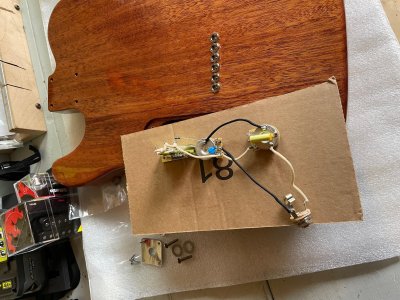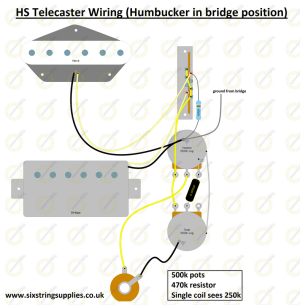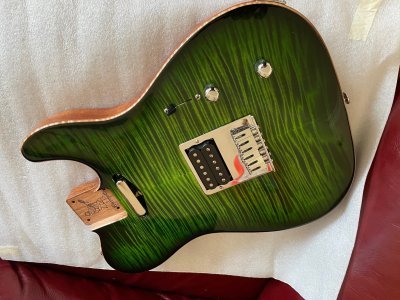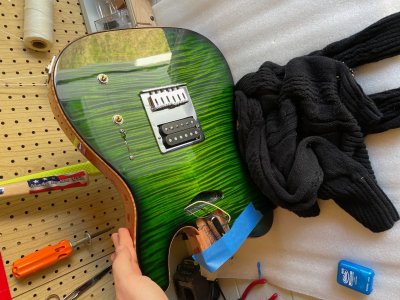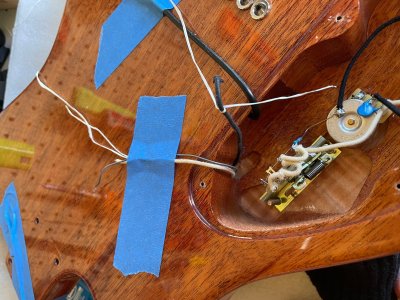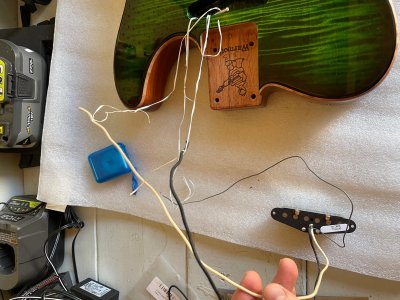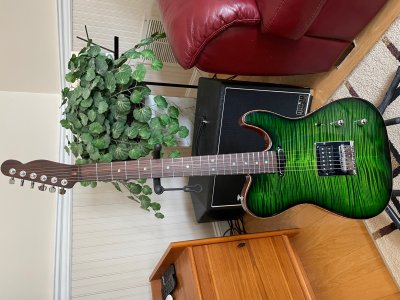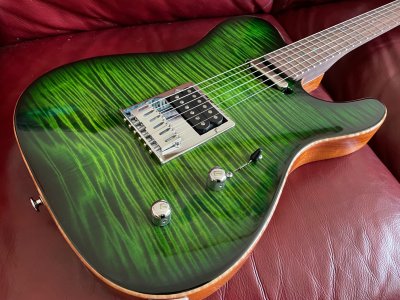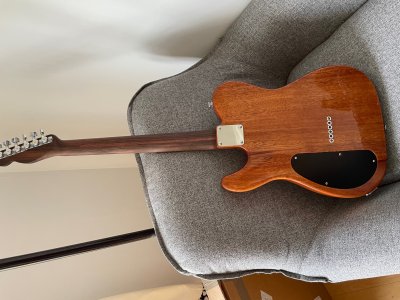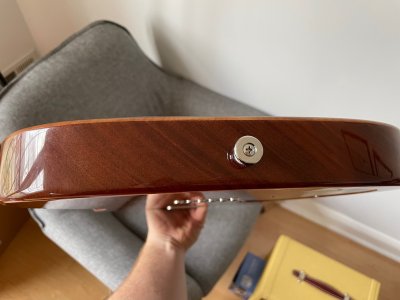My thoughts on my custom build after a few weeks of playing it:
I decided to build this guitar for one reason: I wanted a high grade flame maple top on chambered mahogany with a rosewood neck. If nothing else, just for the aesthetics.
So, first off, it is a stunning guitar. Hats off to Warmoth for producing such a beauty. The flame top is definitely very special and probably a rare find. The grade certainly feels like it's up there with PRS wood library tops or Gibson custom shop AAA.
One observation, which I've noted in another forum post, is the chatoyance of the top. I mentioned that it just doesn't sparkle as I expected. I've heard others describe how tops can vary and chatoyance is not guaranteed despite the degree of flame. However, I wanted to bring this up again because when I opened the rear body cavity to insert the electronics, the inside surface of the maple lam top is visible where the 3 way switch is inserted. It is wildly chatoyant from the back. The same spot doesn't sparkle nearly as much from the outside. Both inside and outside have a clear poly finish, which leads me to believe that the dye is what hinders the chatoyance.
By far my favorite feature of the guitar is the weight balance. The chambered mahogany makes the body feel so much lighter, but it's still heavy enough to prevent neck dive. I can perceive a pleasant resonance when I play it acoustically which could be the chambering or wood combination of mahogany and rosewood or string-through-body/bridge. I'm sure every component plays a role. When I compare the acoustic (unplugged) sound of this tele to my roasted maple + roasted alder strat (with a 510 trem), the sound is very different. Relative to the strat, the tele has dramatically more bass.
This is my second warmoth neck. My first has 6100 jumbo frets and this has 6150. I prefer the 6150 size- It allows ample fretting depth, but I'm less likely to go sharp if I fret too hard (especially on the low E). I'm currently playing 8's, so the strings are very flexible. Might switch back to 9's.
I got the neck with vintage/modern construction because I really wanted a one piece rosewood neck (fretboard is part of the same wood blank as the rest of the neck). I much prefer the side-adjust nut on the modern construction, but that's about it. I will note that we recently had a significant drop in temperature and humidity and the neck adjusted significantly. Some of the nuts that hold the tuners in place even loosened, so this was not due to truss rod tension and is a property of the expansion and contraction of the rosewood with changes in humidity. In contrast, the modern construction roasted maple neck on my strat didn't even lose tune. So roasting definitely has its benefits for stability. Roasted rosewood on the horizon, Warmoth?

In terms of pickups, I'm not sure how I feel yet. My gold standard sound is my Les Paul with Classic 57 pickups. I absolutely love that tone through JCM800-style architectures like my Dark Gene Green amp or Pal800 pedal. This time, I opted for a tele neck which was traditional in output, and I matched it with an Air Classic in the bridge. The AC is way lower output than I'm used to for a humbucker, so I really have to crank the gain to get a classic rock roar. Not sure it's such a bad thing, just a new sound for me to play with. If anything, I find I'm focusing more on the notes and less on the raging chord harmonics.
Overall, very happy with how this guitar turned out. A new build is always an exciting and fulfilling journey!



